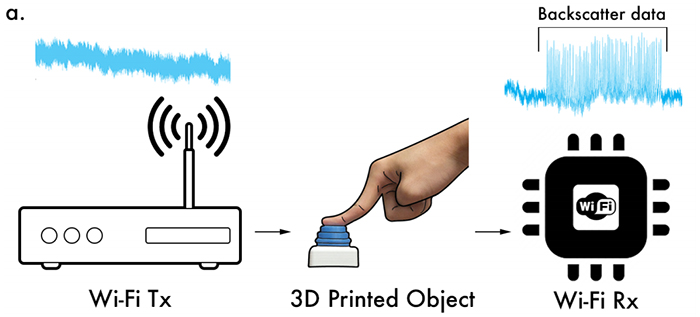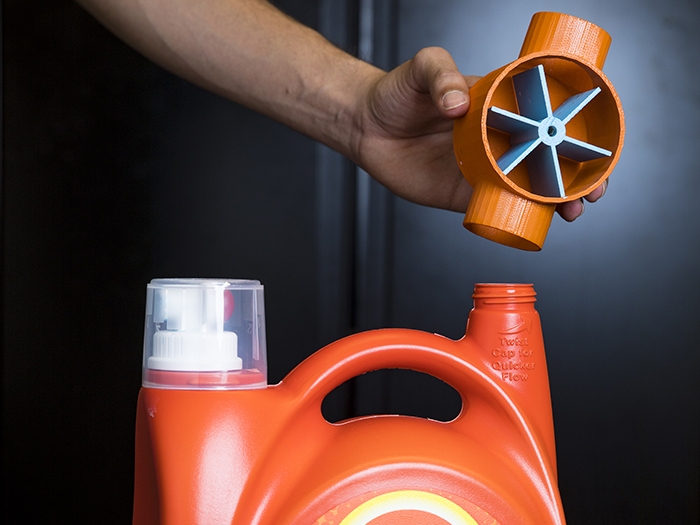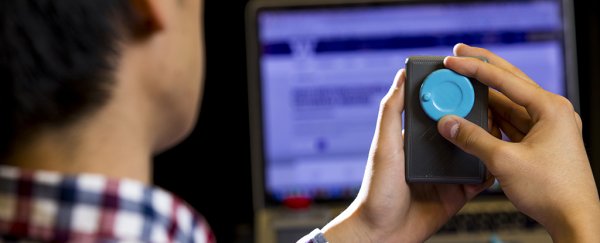Scientists have developed new 3D-printed plastic objects that can hook up to Wi-Fi without the aid of any electronics or batteries, meaning household devices could get a lot smarter in the future without the need for any circuitry.
If that's not blowing your mind just yet, think about this: the tech could be used to make a laundry bottle that orders a refill online as soon as it runs out, or a simple volume slider that connects to your speakers without any cabling or even a power source.
So how is this possible? To achieve this, a team from the University of Washington built a system comprising a plastic switch, spring, gear, and antenna, which when activated with a press or other movement can absorb or reflect passing Wi-Fi signals in order to communicate.
"Our goal was to create something that just comes out of your 3D printer at home and can send useful information to other devices," says one of the researchers, electrical engineer Vikram Iyer.
"But the big challenge is how do you communicate wirelessly with Wi-Fi using only plastic? That's something that no one has been able to do before."
 (University of Washington)
(University of Washington)
Core to the plastic mechanism is a conductive filament, made from plastic and copper and also 3D printed, which can intermittently connect and disconnect with a Wi-Fi antenna, changing the signal as it passes it on.
So a 3D-printed plastic anemometer, for example, could measure wind speed because as it spins round more quickly, and the filament connects more often, the transmitted transitions get more frequent. A water flow meter would work in the same way.
The scientists have been able to build similar mechanisms into switches, dials, and sliders – the movement generates the transitions and sends a simple signal over Wi-Fi, which could be to a smartphone or another device.
The presence of the tooth on a gear, connecting with the filament, taps out the 1s and 0s needed for digital communication.
 A flow meter for a laundry bottle. (University of Washington)
A flow meter for a laundry bottle. (University of Washington)
These kind of techniques are known as backscattering, or reflecting waves – which in this case are the Wi-Fi signals.
The team was also able to adapt the filament to work with iron filings instead of copper, enabling the encoding of information into a 3D-printed object – almost like an invisible barcode that could be an identifier or instructions.
"It looks like a regular 3D printed object but there's invisible information inside that can be read with your smartphone," says one of the team, Justin Chan.
That's because just about every smartphone out there comes with a magnetometer to help work out where in the world it is based on the Earth's magnetic field. The same sensor is able to detect the pattern of 1s and 0s created by the iron filings and plastic.
For now these 3D-printed gadgets are chunky and not yet ready for the masses, but in the future they could be adapted for all sorts of purposes – with so many gadgets in our homes now competing for Wi-Fi signal and electricity, it's a simpler approach to getting more devices connected to the web and each other.
"This work is part of our long-term vision for democratising the creation of IoT-enabled objects that can communicate information seamlessly, everywhere and at anytime," write the scientists in their report.
The research has yet to be peer-reviewed but you can read the paper here. The team has presented its work at the SIGGRAPH Conference and Exhibition in Asia, and has made a video showing off their creations which you can see below:

